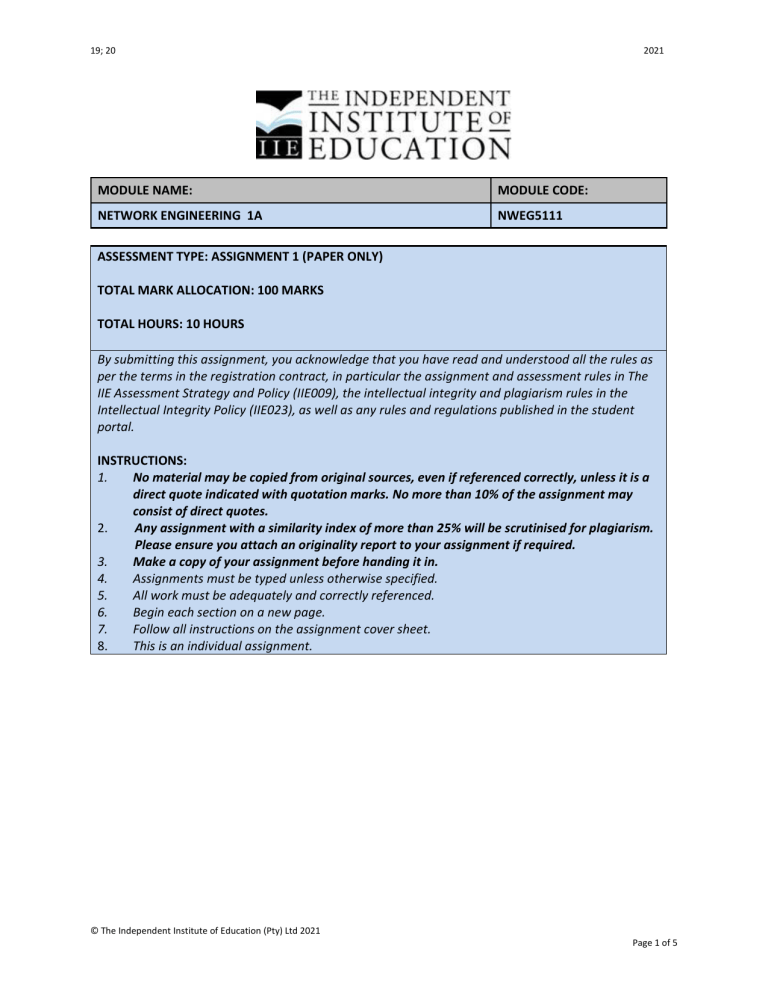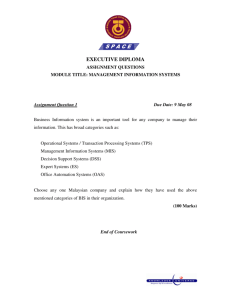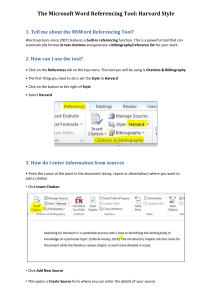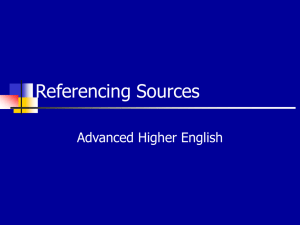
19; 20 2021 MODULE NAME: MODULE CODE: NETWORK ENGINEERING 1A NWEG5111 ASSESSMENT TYPE: ASSIGNMENT 1 (PAPER ONLY) TOTAL MARK ALLOCATION: 100 MARKS TOTAL HOURS: 10 HOURS By submitting this assignment, you acknowledge that you have read and understood all the rules as per the terms in the registration contract, in particular the assignment and assessment rules in The IIE Assessment Strategy and Policy (IIE009), the intellectual integrity and plagiarism rules in the Intellectual Integrity Policy (IIE023), as well as any rules and regulations published in the student portal. INSTRUCTIONS: 1. No material may be copied from original sources, even if referenced correctly, unless it is a direct quote indicated with quotation marks. No more than 10% of the assignment may consist of direct quotes. 2. Any assignment with a similarity index of more than 25% will be scrutinised for plagiarism. Please ensure you attach an originality report to your assignment if required. 3. Make a copy of your assignment before handing it in. 4. Assignments must be typed unless otherwise specified. 5. All work must be adequately and correctly referenced. 6. Begin each section on a new page. 7. Follow all instructions on the assignment cover sheet. 8. This is an individual assignment. © The Independent Institute of Education (Pty) Ltd 2021 Page 1 of 5 19; 20 2021 Referencing Rubric ____ Providing evidence based on valid and referenced academic sources is a fundamental educational principle and the cornerstone of high‐quality academic work. Hence, The IIE considers it essential to develop the referencing skills of our students in our commitment to achieve high academic standards. Part of achieving these high standards is referencing in a way that is consistent, technically correct and congruent. This is not plagiarism, which is handled differently. Poor quality formatting in your referencing will result in a penalty of a maximum of ten percent being deducted from the mark awarded, according to the following guidelines. Please note, however, that evidence of plagiarism in the form of copied or uncited work (not referenced), absent reference lists, or exceptionally poor referencing, may result in action being taken in accordance with The IIE’s Intellectual Integrity Policy (0023). Markers are required to provide feedback to students by indicating (circling/underlining) the information that best describes the student’s work. Minor technical referencing errors: 5% deduction from the overall mark – the student’s work contains five or more errors listed in the minor errors column in the table below. Major technical referencing errors: 10% deduction from the overall mark – the student’s work contains five or more errors listed in the major errors column in the table below. If both minor and major errors are indicated, then 10% is deducted from the overall mark. The examples provided below are not exhaustive but are provided to illustrate the error. Required: Technically correct referencing style Consistency The same referencing format has been used for all in‐text references and in the bibliography/reference list. Technical correctness Referencing format is technically correct throughout the submission. Position of the reference: a reference is directly associated with every concept or idea. For example, quotation marks, page numbers, years, etc. are applied correctly, sources in the bibliography/reference list are correctly presented. Congruence between in‐text referencing and bibliography/reference list All sources are accurately reflected and are all accurately included in the bibliography/reference list. In summary: the recording of references is accurate and complete. Minor errors in technical correctness of referencing style Deduct 5% from mark awarded Minor inconsistencies. The referencing style is generally consistent, but there are one or two changes in the format of in‐ text referencing and/or in the bibliography. For example, page numbers for direct quotes (in‐text) have been provided for one source, but not in another instance. Two book chapters (bibliography) have been referenced in the bibliography in two different formats. Generally, technically correct with some minor errors. The correct referencing format has been consistently used, but there are one or two errors. Concepts and ideas are typically referenced, but a reference is missing from one small section of the work. Position of the references: references are only given at the beginning or end of every paragraph. For example, the student has incorrectly presented direct quotes (in‐text) and/or book chapters (bibliography/reference list). Generally, congruence between the in‐text referencing and the bibliography/ reference list with one or two errors. There is largely a match between the sources presented in‐text and the bibliography. For example, a source appears in the text, but not in the bibliography/reference list or vice versa. In summary, at least 80% of the sources are correctly reflected and included in a reference list. Major errors In technical correctness of referencing style Deduct 10% from mark awarded Major inconsistencies. Poor and inconsistent referencing style used in‐text and/or in the bibliography/ reference list. Multiple formats for the same type of referencing have been used. For example, the format for direct quotes (in‐text) and/or book chapters (bibliography/ reference list) is different across multiple instances. Technically incorrect. The referencing format is incorrect. Concepts and ideas are typically referenced, but a reference is missing from small sections of the work. Position of the references: references are only given at the beginning or end of large sections of work. For example, incorrect author information is provided, no year of publication is provided, quotation marks and/or page numbers for direct quotes missing, page numbers are provided for paraphrased material, the incorrect punctuation is used (in‐text); the bibliography/reference list is not in alphabetical order, the incorrect format for a book chapter/journal article is used, information is missing e.g. no place of publication had been provided (bibliography); repeated sources on the reference list. A lack of congruence between the in‐text referencing and the bibliography. No relationship/several incongruencies between the in‐text referencing and the bibliography/reference list. For example, sources are included in‐text, but not in the bibliography and vice versa, a link, rather than the actual reference is provided in the bibliography. In summary, at least 60% of the sources are incorrectly reflected and/or not included in reference list. Overall Feedback about the consistency, technical correctness and congruence between in‐text referencing and bibliography: _____________________________________________________________________________________________________________________ ____________________________________________________________________________________________________________ © The Independent Institute of Education (Pty) Ltd 2021 Page 2 of 5 19; 20 2021 Question 1 (Marks: 100) Answer all of the questions below. Q.1.1 Using a computer networks to perform an application, many pieces come together to assist in the operation. A network architecture or communication model places the appropriate network pieces in layers. i. List the TCP/ IP protocol suite layer(s) that performs each of the following (4) functions: ii. a. Data compression; b. Multiplexing; c. Routing; d. Definition of a signal’s electrical characteristics. The layers of the TCP/ IP protocol suite and OSI are different. Which layers (4) are “missing” from the TCP/ IP suite? Are they really missing? iii. If the data link layer provides error checking, and the transport layer provides (4) error checking, is this not redundant? Explain your answer iv. Similarly, the data‐link layer provides flow control, and the transport layer (3) provides flow control. Are these different forms of flow control? Explain your answer Q.1.2 Using a laptop computer with a wireless connection into the company’s local area (5) network, you download a Web page from the Internet. List all the different network connections involved in this operation. Q.1.3 Briefly explain some examples of convergence in the wireless market. (5) Q.1.3 What are the binary encodings of the message “Hello, World”? Using the following (9) character code sets: EBCDIC ASCII, Unicode © The Independent Institute of Education (Pty) Ltd 2021 Page 3 of 5 19; 20 Q.1.4 2021 Assume you work for a company that has two offices located approximately two km (10) apart. There is a need to transfer data between the two offices at speeds up to 100 Mbps. I. List solutions as possible for interconnecting the two buildings. Is each solution technically feasible? Financially feasible? Politically feasible? Defend your position. Q.1.5 Q.1.5.1 Show the sequence of start, data, and stop bits that are generated during (10) asynchronous transmission of the character string ‘LUNCH.’ Q.1.5.2 Discuss the primary differences between the following data link (9) connections: Q.1.6 a) Asynchronous connections, b) Synchronous, c) Isochronous connections? The local area network shown in Figure 7‐21 (Prescribed material) has two hubs (X and Y) interconnecting the workstations and servers. Replace hub Y with a switch and answer the below question. Q.1.6.1 What workstations and servers will receive a copy of a packet if the (6) following workstations/ servers transmit a message: Q.1.7 • Workstation 1 sends a message to workstation 3: • Workstation 2 sends a message to Server 1: • Server 1 sends a message to workstation 3: Discuss by giving an example of a situation in which a virtual LAN might be a useful (10) tool in both the business environment and in an educational environment. Q.1.8 In a client/ server system, a client transmits a request to a server, the server (10) performs a processing operation, and the server returns a result. Describe the possible things that can go wrong with transmission in this scenario. © The Independent Institute of Education (Pty) Ltd 2021 Page 4 of 5 19; 20 Q.1.9 2021 Describe by creating a scenario that demonstrates the differences between (5) connection‐oriented and connectionless network applications. Q.1.10 The hackers that perform distributed denial of service attacks on e‐commerce sites: (6) are they criminals, or are they heroes helping computer specialists discover faults within computer networks and systems? Motivate your answer. [TOTAL MARKS: 100] © The Independent Institute of Education (Pty) Ltd 2021 Page 5 of 5




